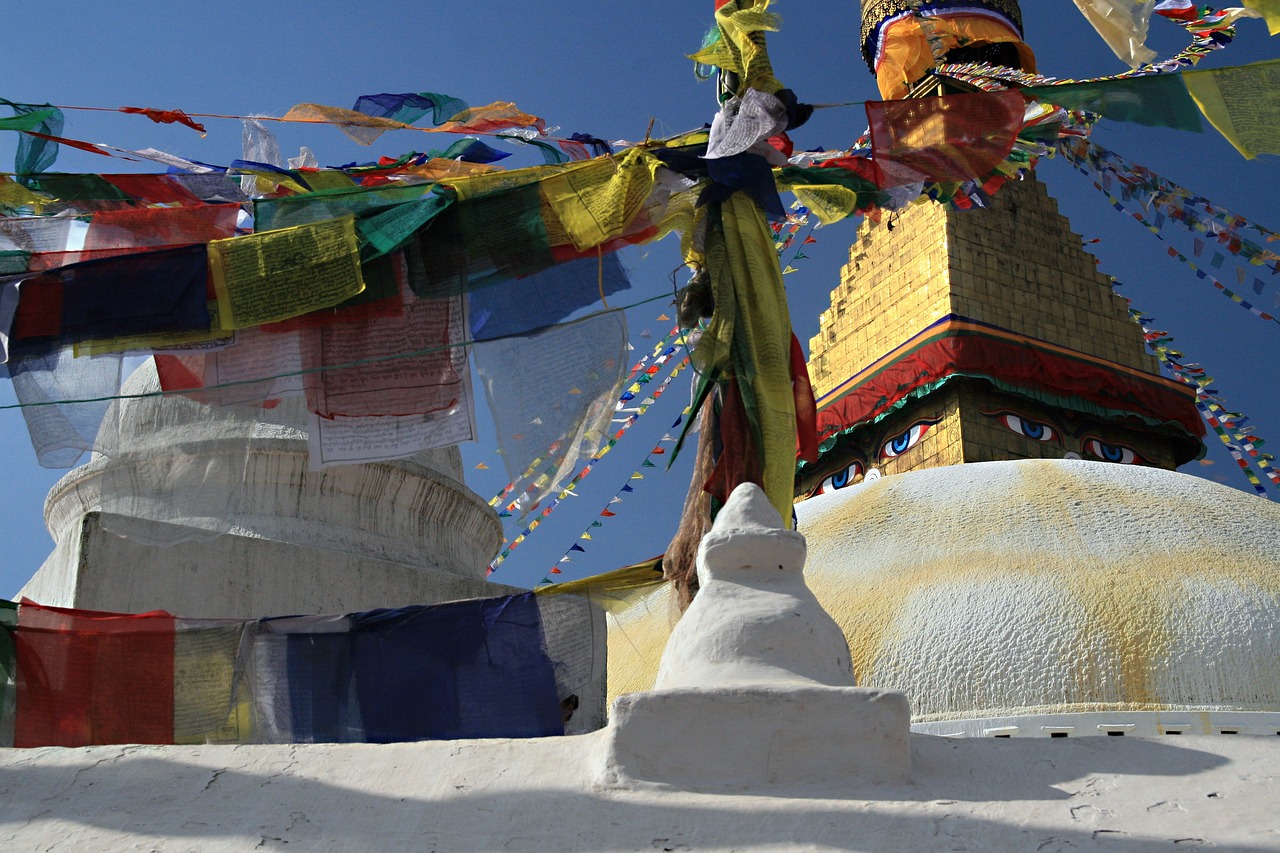Nepal, the land of soaring mountains and spiritual tranquility, is home to some of the world’s most revered Hindu and Buddhist temples. Whether you’re a cultural explorer, spiritual seeker, or first-time traveler, this guide introduces you to the sacred heart of Nepal.
From centuries-old stupas to intricately carved Hindu shrines, Nepal’s temples offer a unique window into the nation’s soul. Let’s explore the rich traditions, breathtaking architecture, and religious significance of Nepal’s most iconic temples.
Understanding Nepal’s Spiritual Landscape
Nepal is a spiritual mosaic where Hinduism and Buddhism coexist peacefully. More than 80% of Nepalese identify as Hindu, while a significant number follow Buddhism—especially in the Himalayan regions. Many temples are shared by both religions, making Nepal a symbol of harmony.
Temples are not just places of worship; they are social, cultural, and historical landmarks embedded in everyday life. For travelers, they offer a chance to witness local rituals, connect with ancient philosophies, and find personal peace.
Keywords: Nepal religious sites, beginner guide to temples in Nepal, Hindu and Buddhist temples in Nepal
The Role of Temples in Nepalese Daily Life
In Nepal, temples are not tourist spots—they are living institutions. Each day begins with locals visiting temples to light incense, offer flowers, and ring temple bells. From newborn blessings to wedding rituals and annual festivals, temples mark every important life event.
Morning and evening prayers (pujas) draw crowds, and major festivals like Dashain, Tihar, Buddha Jayanti, and Maghe Sankranti are celebrated with temple-centric rituals.
Long-tail search terms: how temples are used in Nepal, daily rituals in Nepalese temples
Top 10 Must-Visit Temples in Nepal
Here are the most iconic Hindu and Buddhist temples every beginner should explore:
Pashupatinath Temple (Kathmandu)
One of the holiest Hindu temples dedicated to Lord Shiva. Located on the Bagmati River, it’s famous for open-air cremations and spiritual ambiance. Non-Hindus can’t enter the main sanctum but can explore the temple grounds.
Swayambhunath Stupa (Monkey Temple)
Perched atop a hill in Kathmandu, this 2,000-year-old Buddhist stupa offers panoramic city views and spiritual serenity. Watch for monkeys and prayer flags fluttering in the wind.
Boudhanath Stupa (Kathmandu)
A spiritual magnet for Tibetan Buddhists, this massive stupa is surrounded by monasteries, shops, and chanting monks. It’s best visited at sunrise or sunset for a meditative experience.
Muktinath Temple (Mustang)
Sacred to both Hindus and Buddhists, Muktinath is a high-altitude temple in the Mustang district. Pilgrims visit to bathe under its 108 water spouts believed to cleanse sins.
Dakshinkali Temple (Pharping)
Located south of Kathmandu, this powerful shrine is dedicated to Goddess Kali. Known for animal sacrifices (mostly goats), it’s busiest on Saturdays and during Dashain.
Changunarayan Temple (Bhaktapur)
The oldest Hindu temple in Nepal, dating back to the 4th century, dedicated to Lord Vishnu. A UNESCO World Heritage Site, it’s known for its intricate carvings and woodwork.
Lumbini (Rupandehi District)
The birthplace of Siddhartha Gautama (Buddha), Lumbini is a UNESCO-listed pilgrimage site. The Maya Devi Temple, sacred garden, and international monasteries make it a must-see.
Kopan Monastery (Kathmandu Valley)
A serene Buddhist monastery offering courses in meditation and Tibetan Buddhism. Ideal for beginners wanting a deeper spiritual experience.
Manakamana Temple (Gorkha)
Dedicated to Goddess Bhagwati, Manakamana is believed to fulfill wishes. Accessed via a scenic cable car ride, it’s popular among pilgrims and families.
Janaki Mandir (Janakpur)
A majestic temple dedicated to Goddess Sita, located in her mythological birthplace. The temple’s design is heavily influenced by Mughal architecture.
Religious Etiquette at Temples in Nepal
Respect is key. Here are basic do’s and don’ts for visiting temples:
- Dress modestly: Cover shoulders and legs.
- Remove shoes before entering inner temple areas.
- No selfies in sacred spots or during prayers.
- Do not touch statues or sacred items.
- Make a small donation if you wish—no obligation.
Decoding Temple Architecture and Symbols
Hindu Temples:
- Shikhara (mountain-like towers)
- Garbhagriha (inner sanctum)
- Sculptures of gods like Shiva, Vishnu, and Durga
Buddhist Stupas:
- Eyes of Buddha painted on four sides
- Prayer wheels and flags
- Dome-shaped base representing the earth
Understanding these symbols enriches your visit.
Meditation and Spiritual Experiences
Many temples offer quiet corners for reflection and meditation. At Boudhanath and Kopan Monastery, you can join monks for chanting, spinning prayer wheels, and guided meditation sessions.
Temple Tours and Pilgrimage Routes
Recommended for beginners:
- Kathmandu Valley Heritage Tour: Pashupatinath, Boudhanath, Swayambhunath
- Lumbini Spiritual Circuit
- Muktinath Trek + Mustang exploration
Local guides can enhance your experience by explaining myths and histories behind each temple.
What to Pack for Temple Visits
- Modest clothes (long pants, scarves)
- Reusable water bottle
- Small cash for donations or entry
- Hand sanitizer and socks (if barefoot entry is required)
- A notebook for reflections or journaling
UNESCO World Heritage Temples in Nepal
Nepal is home to several UNESCO World Heritage Sites, many of which are religious:
- Pashupatinath Temple
- Swayambhunath
- Boudhanath
- Changunarayan
These sites are protected for their cultural value. Tourist entry fees often help support restoration and conservation.
Photography Tips at Temples
- Best light: Sunrise and sunset for soft, golden tones.
- Don’t use flash near sacred idols.
- Focus on details: carvings, statues, prayer flags
- Ask before taking pictures of people, especially monks or priests.
Planning Your Temple Journey in Nepal
Best time to visit:
- October–November (cool, dry, post-monsoon clarity)
- March–May (spring blooms and clear skies)
Ideal trip length:
- 7–14 days for temple-focused travel
- Combine temple visits with trekking or wildlife tours
Use local travel agencies or reputable guides for a stress-free experience.
Final Thoughts: A Sacred Journey Begins
Whether you’re seeking enlightenment, cultural discovery, or quiet reflection, Nepal’s temples offer more than architecture—they offer soul-deep experiences. As you explore these sacred spaces, you’ll witness devotion, peace, and tradition thriving in every prayer, bell ring, and smile.
As a first-time traveler, this guide helps you explore with mindfulness, respect, and curiosity. Nepal’s temples are not just ancient—they’re alive.

No Responses